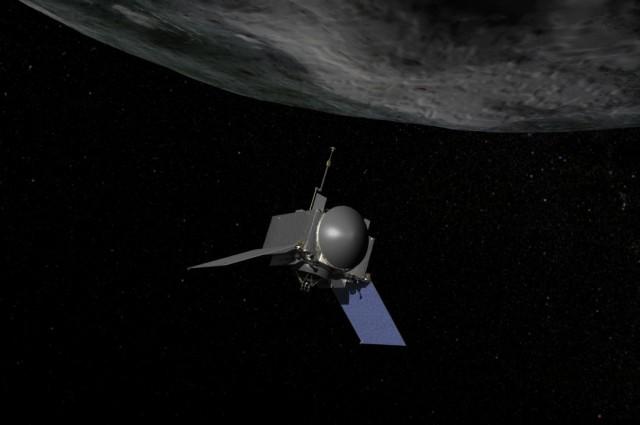
Set to launch in September of 2016, NASA’s OSIRIS-REx mission plans to launch towards the near-Earth orbiting asteroid Bennu, and intends to reach it by August of 2018. Not only does the carbon-rich Bennu potentially harbor elements of our early Solar System, but it’s also expected to contain many of the molecules responsible for life on Earth and in Earth’s oceans. Moreover, scientists estimate Bennu’s current path has a small chance to intersect with Earth via collision sometime in the 22nd Century. NASA hopes OSIRIS-REx’s study of the asteroid can assist it in the future on a potential impact mission should Bennu indeed get close enough to Earth.
Like any expedition through space, OSIRIS-REx’s journey is not intended to be a short one. After reaching Bennu in 2018, the NASA plans to survey the asteroid for nearly a year, taking note of any asteroid plumes, natural satellites, and a list of the best possible sample extraction sites. Once OSIRIS-REx successfully extracts a sample — this would take place in mid-2019 — it would then begin its long journey home, utilizing a window during 2021 when its orbit with Earth is the most ideal. NASA then expects the craft’s sample container to re-enter Earth’s atmosphere on roughly September 24, 2023, some seven years after its initial departure. It seems NASA is a big fan of good things coming to those who wait.
In recent weeks, the OSIRIS-REx mission has passed critical steps toward its planned launch as the cameras designed to photograph and map Bennu have been delivered for installation. Designed and built by the University of Arizona’s Lunar and Planetary Laboratory, the OSIRIS-REx Camera Suite is comprised of a small telescope used for taking photos from nearly 1.2 million miles away, a MapCam which searches for dust plumes on Bennu, and a SamCam which examines the taken sample.
To make the mission even more enthralling, NASA put together an interactive website detailing each and every planned step for the OSIRIS-REx. From its launch window in September of 2016 to its eventual return in 2023, the space agency leaves no stone unturned and gives fans an incredibly up-close and personal look. Though the obvious downside to the mission is the fact we won’t see the fruit of this expedition for another seven years, it’s incredibly captivating to see NASA continue to outdo itself nearly every year.
Editors' Recommendations
- Hubble discovers over 1,000 new asteroids thanks to photobombing
- NASA needs a new approach for its challenging Mars Sample Return mission
- These 3 companies are developing NASA’s new moon vehicle
- Here’s the new science that’s launching to the ISS today
- NASA and Boeing start fueling Starliner spacecraft for first crewed flight



